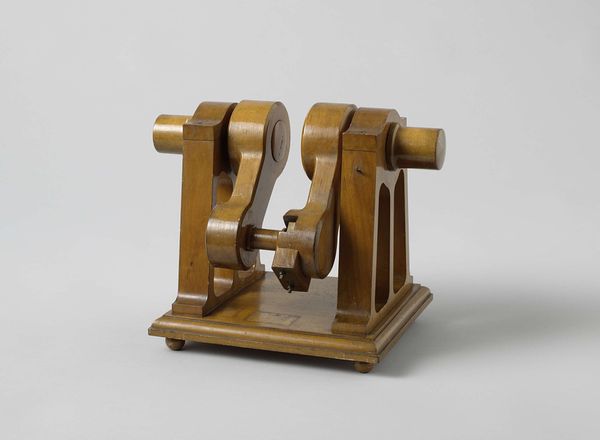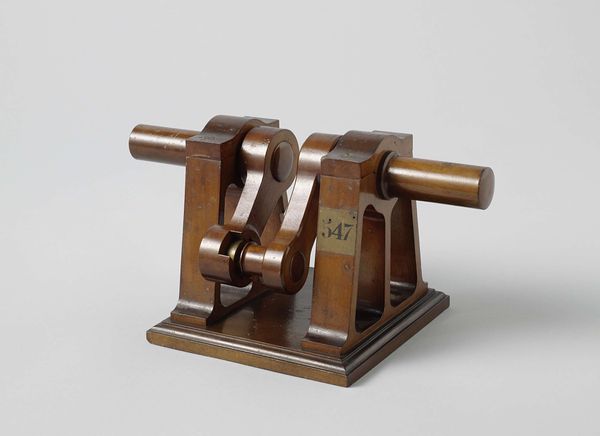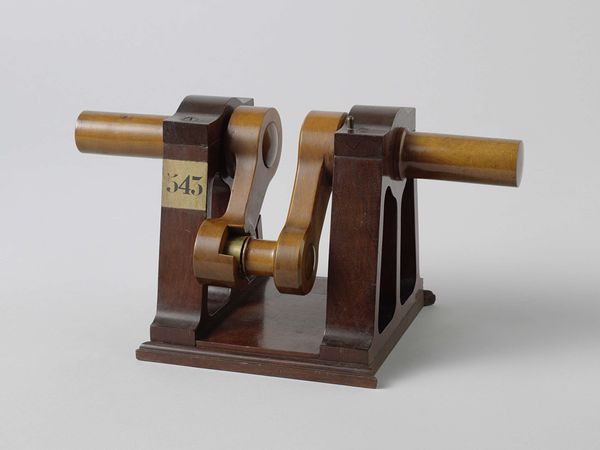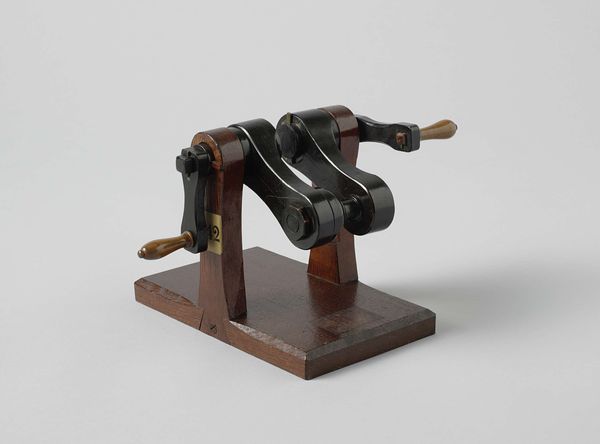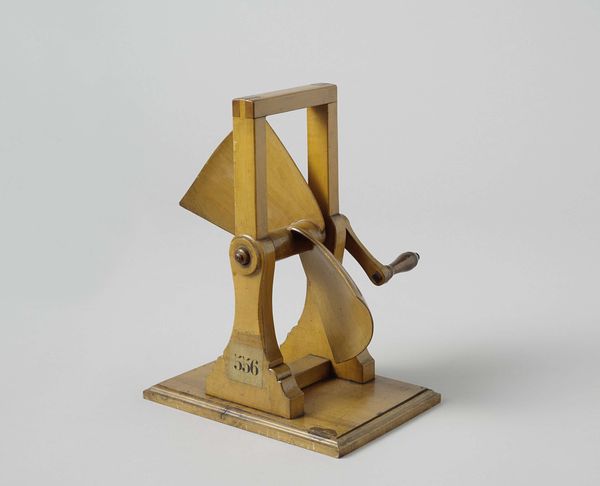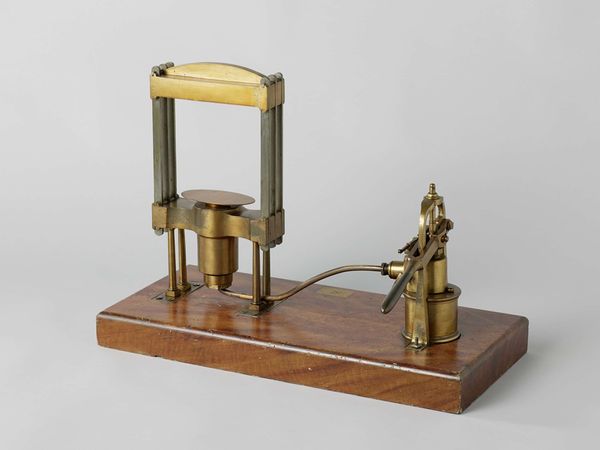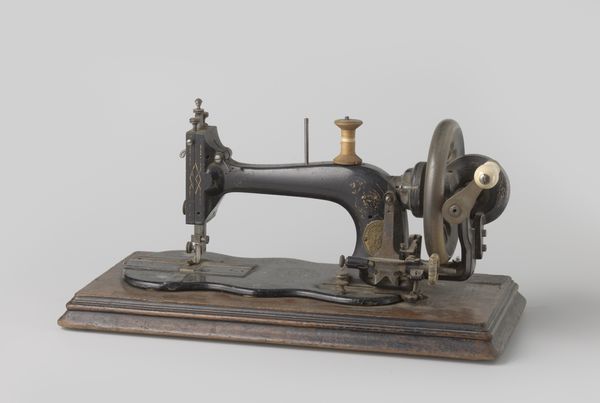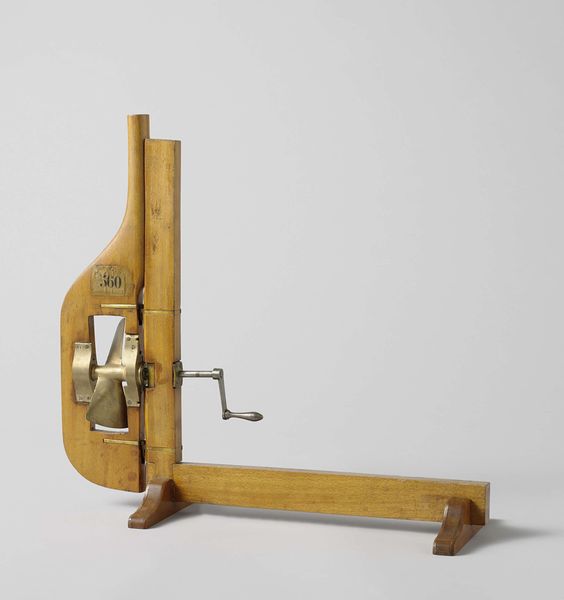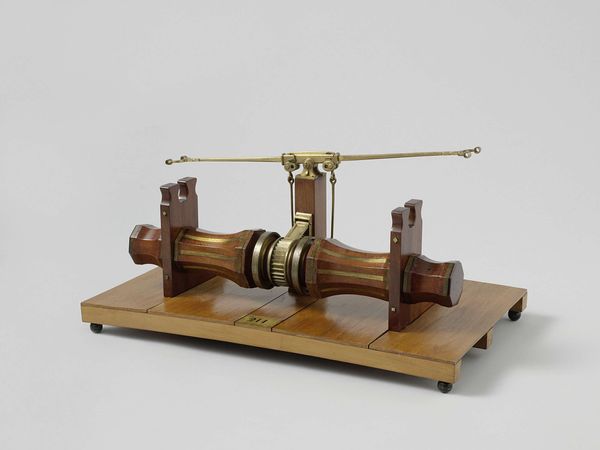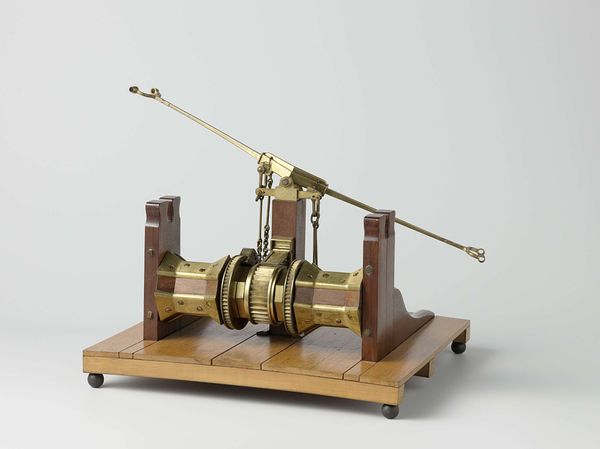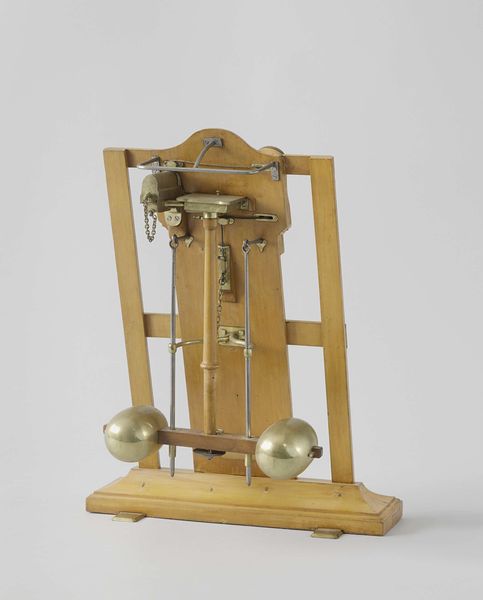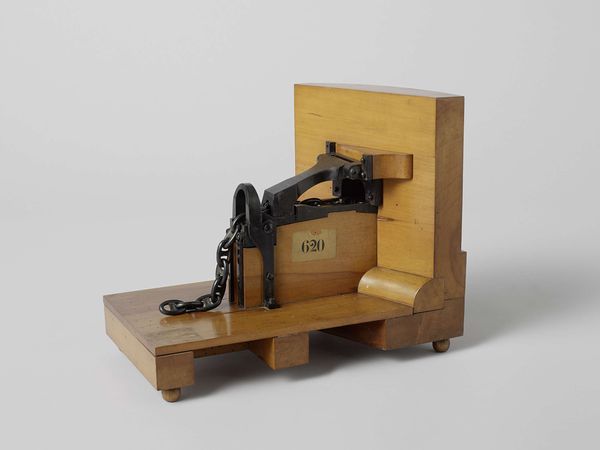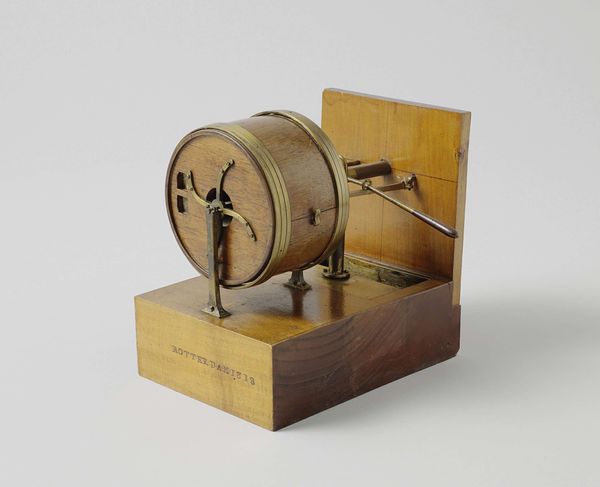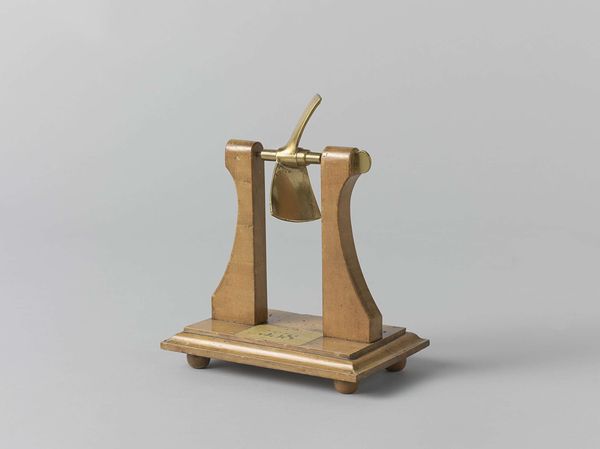
metal, wood
#
3d model
#
3d printed part
#
metal
#
plastic material rendering
#
virtual 3d design
#
3d shape
#
prop product design
#
metallic object render
#
3d modeling
#
wood
#
cut-out
#
product render
Dimensions: height 25 cm, width 32.5 cm, depth 24 cm
Copyright: Rijks Museum: Open Domain
Editor: Here we have an intriguing piece, "Model of a Disengaging Gear for Paddle Wheels," created in 1841. It appears to be crafted from wood and metal, with a sort of scientific or industrial aesthetic. What historical context surrounds this object? Curator: This model offers a fascinating glimpse into the relationship between technology, labor, and power in the 19th century. Paddle wheels were a crucial part of early industrialization and transportation, particularly in the context of steamboats, and, by extension, resource extraction. The "disengaging gear" represents attempts to optimize efficiency, furthering capitalist ambitions. This intersects with narratives of colonization and exploitation, if we consider how steamboats facilitated the movement of goods and people involved in those projects. What kind of politics are embedded within technologies of movement? Editor: That's a perspective I hadn’t fully considered. It seems deceptively simple at first glance, but now I’m seeing a connection to larger societal shifts. Curator: Exactly. Consider the materials themselves – wood and metal, representing both the natural world being reshaped, and the metallic underpinnings of this gear's social impact. This wasn’t just about engineering; it was about control, specifically the command over navigable routes and its socio-economic reverberations. Can you see the relationship with how power was concentrated during this historical moment? Editor: So, this gear becomes symbolic of industrial progress, but also carries the weight of colonial legacies and exploitation, influencing not just commerce but global politics? Curator: Precisely. These models acted as demonstrations, propagating ideas of innovation with an underpinning of progress fueled by resources acquired through the era's established power dynamics. Considering those dynamics, we're prompted to question whose progress was really being advanced and who bore the brunt of it? Editor: Wow, I will definitely see these gears with different eyes. Thank you! Curator: The power of art—or, in this case, what appears to be a technical model—lies in its capacity to speak about technology in complex, and meaningful, ways.
Comments
No comments
Be the first to comment and join the conversation on the ultimate creative platform.
